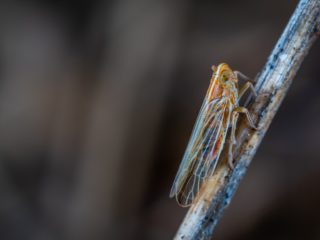Cicada’s Antimicrobial Nanotechnology Solution for COVIDFree Surfaces
By Dr Parva Chhantyal, PhD for Azo Nano – the leading online publication for the nanotechnology community.

UK-based Cicada has launched a long-lasting antimicrobial solution to remove COVID on surfaces. The company was established as a subsidiary of an automotive industry specialist Duracare to create safe and COVID free areas with nanotechnology.
Severe acute respiratory syndrome coronavirus2 (SARSCoV2) spreads when a person touches contaminated surfaces then directly touches their mouth, nose, or eyes. More than 68 million people have been infected worldwide at the time of writing.
See the full article here Dr Parva Chhantyal or continue reading below…
Virus droplets contaminate surfaces for several days, with routine cleaning and disinfecting required.
Many commercial surface disinfectant kills the viruses but does not protect the surface from future contamination. This leads to viruses returning once the infected people come back to the area (Laister, 2020). Cicada has partnered with Signo NanoCare UK Ltd to develop virus resistant nano coating solutions.
Noel Parkinson, Director, Cicada says:
“The coating forms a nanoscale layer of glass over the surface of the base materials which not only makes them easier to clean, it repels liquid and dirt, it also provides a protective antimicrobial layer to constantly kill viruses, bacteria, moulds and fungi. The microbe is physically killed as the surface punctures the cell’s out wall, rendering it inactive. This product provides a proven minimum 12 month antimicrobial protection to all treated areas.”
Antimicrobial Nanotechnology for COVID19
COVID19 is around 125 nm in diameter (Chhantyal, 2020). For this size, biocompatible nanoparticles could be used using a drug delivery system to alter the virus’s properties and neutralize it genetically.
Due to the increased surface-to-volume ratio of a given mass of particles, the use of 1-100 nm scale nanomaterials has become a popular approach to eliminate microorganism activity.
In June 2020, the University of California San Diego participated in the fight against COVID19 by demonstrating the prospect of using biodegradable, FDA approved polymer core ‘nanosponges’ that absorb harmful pathogens and toxins. The nanosponges are 1000 times smaller than human hair’s width (Zhang, et al., 2020).
Previously, zinc, copper, and silver have shown excellent antibacterial properties as their particle size is reduced, including their addition into the polymer that increases metal ions’ release, confirming antimicrobial behavior (Palza, 2015).
Cicada’s adopted technology was initially introduced by NanoCare Deutschland AG, who won the German Innovation Award in 2019 by innovating the technology called ‘Liquid Guard’. This solution protects surfaces from microbial growth, such as Staphylococci, 24 hours a day (businesswire, 2019). Cicada’s solution further enhanced the technology to provide a minimum of 12month protection once the area is treated.
COVID19 Elimination by Disinfection
The correct disinfectant prevents further transmission of COVID19 on different surfaces (Queensland Government, 2020). According to the researchers, COVID19contaminated surfaces can be disinfected using the following combined chemicals: 62–71% ethanol, 0.5% hydrogen peroxide, or 0.1% sodium hypochlorite (Kampf, Todt, Pfaender, & Steinmann, 2020).
To protect the person carrying out disinfection in many commercial places, such as on planes, a Universal Precaution Kit (UPK) and personal protection equipment (PPE) (IATA, 2020) is required.
The virus’s inactivity on different surfaces is influenced by temperature, humidity, and surface type (Xue, Ball, Alexander, & Alexander, 2020). Previously, the researchers investigated the influence of temperature and humidity on reproduction (R) numbers, which showed a decline in the R number to around 0.89 (0.69 by temperature and 0.20 by humidity) upon increasing the temperature by 30 degrees Celsius and relative humidity by 25% from winter to summer in the northern hemisphere (Wang, et al., 2020).
Another study investigated the importance of studying the droplet’s drying time and its connection to the pandemic’s spread (Bhardwaj & Agrawal, 2020). Their result suggested that a shorter drying time, which is influenced by the contact angle’s function, corresponds to a decrease in the chances of COVID infection.
Among the recent innovations on the surface inactivity of COVID, the Centre for Biomedical Technologies at Queensland University of Technology (CBTQUT) has successfully wet-etched a nanostructure with a width of 2125 nm onto an aluminum 6063 alloy surface. This demonstrated the inactivity of COVID19 within six hours on durable antiviral nanostructured surfaces (NBIC, 2020).
Cicada’s technology has given excellent hope in keeping public places safe from COVID 19 and is an exceptional basis for research should another pandemic arise in the future.
The nanocoating is dermatologically safe and has already been adopted by the Hull Collegiate School.
To see the full editorial feature on Azo Nano, reference and further reading, please visit HERE.
About Parva Chhantyal:
After graduating from The University of Manchester with a Master’s degree in Chemical Engineering with Energy and Environment in 2013, Parva carried out a PhD in Nanotechnology at the Leibniz University Hannover in Germany. Her work experience and PhD specialised in understanding the optical properties of Nanomaterials. Since completing her PhD in 2017, she is working at Steinbeis RTech as a Project Manager.




